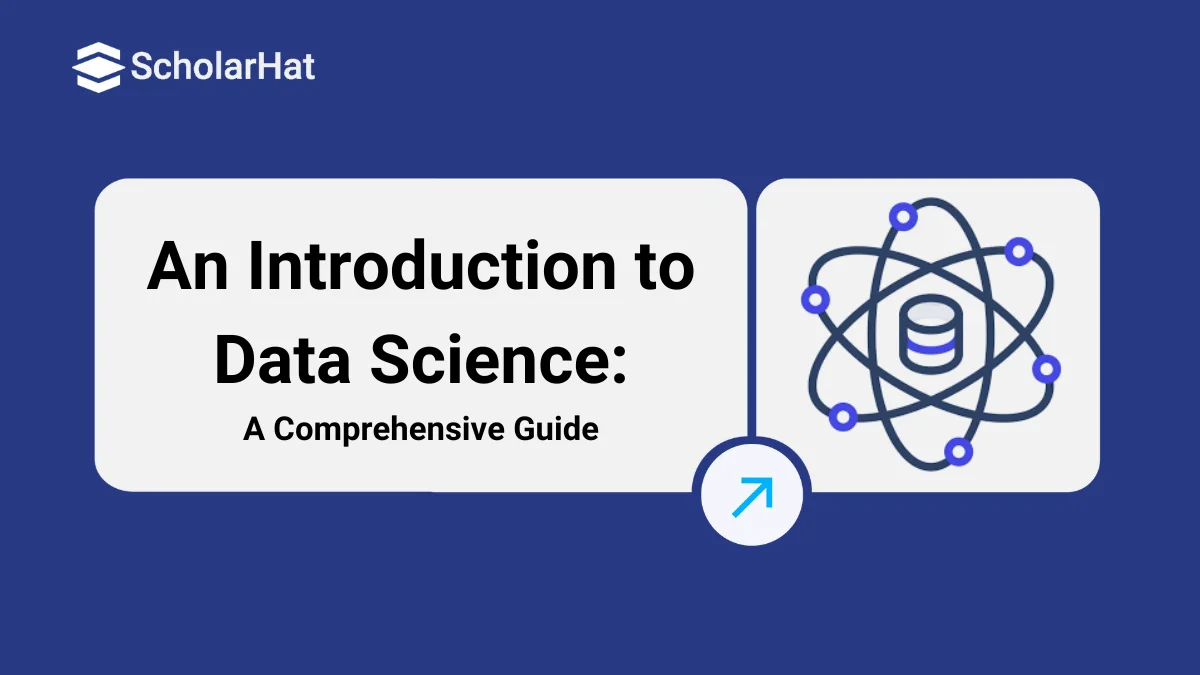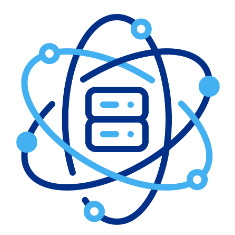21
DecAn Introduction to Data Science: A Comprehensive Guide
Introduction to Data Science: An Overview
Data science, which uses scientific techniques and algorithms to extract insights from data, is essential for businesses and organizations in the data-rich environment of today. To analyze data, including through tools like statistical analysis, machine learning, and data visualization, individuals often start by enrolling in a Data Science Beginner Course. Data scientists employ a range of techniques and methods learned from such courses to derive valuable insights. Data science tutorial can help aspiring professionals learn how to become data scientists and understand how to produce insights that can lead to smarter decisions, new products, and process optimization.
What is Data Science?
Data science is a complex field, but it is also a very rewarding one. Data scientists have the opportunity to make a real impact on the world, and they are in high demand. Following is a brief overview of data science:
- An interdisciplinary field is data science. As a result, it incorporates information from numerous academic fields, including management, computer science, statistics, and mathematics.
- Large volumes of data must be gathered, analyzed, and interpreted. Numerous sources, including social media, sensor data, or customer transactions, can provide this data.
- To glean valuable insights from data, data scientists employ a variety of methodologies. Machine learning, data mining, & predictive modeling are some of these methods.
- Making wise decisions and resolving complex issues are both possible with the help of these revelations. Data scientists, for example, can utilize data to spot fraud, forecast client behavior, and enhance company procedures.
Read More - Best Data Science Interview Questions
How Data Science Works?
- Problem Statement: Your data science project's problem statement should be formulated and defined with clarity. Make sure it benefits the company or organization.
- Data collection: Conduct research and compile the essential data for your project, which may be in films, spreadsheets, as well as coded forms. The data may be structured or unstructured.
- Data cleaning: Remove any entries that are missing, redundant, superfluous, or duplicated from the data that has been gathered. Depending on your preferences and needs, use R or Python for data cleansing.
- Data Analysis and Exploration: Using libraries like GGplot in R or Matplotlib in Python, analyze the data's structure, find hidden patterns, examine behaviors, and visualize correlations.
- Data modeling: Create a hypothesis model that accounts for your data and choose a suitable technique, such as clustering, regression, classification, or SVM. Making use of techniques like K-fold validation, train and test your model.
- Deployment and optimization: Assess the effectiveness of your model, ensure its precision, and make adjustments to improve forecasts. Publish your model for use by businesses, then solicit comments to refine it further.
Why Data Science is important:
Data science is significant because it enables businesses to better understand their data, make data-driven decisions, as well as handle challenging issues. It enables companies to better consumer experiences, increase decision-making, optimize operations, and drive innovation across a range of industries.
History of Data Science
- Early in the 20th century, statistics emerged as a field of study, and statisticians started using data to infer future events and reach conclusions.
- Organizations began to appreciate the usefulness of data in making strategic decisions in the 1990s. As a result, data mining and additional data-driven techniques were used more frequently.
- Making sense of the enormous amounts of data that were suddenly being generated presented a new problem for organizations with the rise of big data in the 2000s. New data science methodologies, such as machine learning, and artificial intelligence, were developed as a result.
- Data science is currently a growing topic that is used in a wide range of sectors, including healthcare, finance, retail, & transportation. In addition, data science is being used to address some of the most important global issues, like poverty and climate change.
Importance of Data Science and Scope of Data Science
- An essential function in a data-driven world: In today's data-driven world, when businesses primarily rely on data to make decisions and gain a competitive edge, data science is essential.
- Benefits for businesses: Data science enables companies to make data-driven decisions, spot growth prospects, and outperform the competition.
- Applications of Data Science in a variety of fields: Data science has uses in many fields, including marketing, finance, healthcare, and cybersecurity. It supports businesses in various industries as they streamline processes, enhance consumer satisfaction, and create new goods and services.
- Operational optimization: By using data science to analyze vast amounts of data and derive insightful knowledge, organizations can optimize operations and make cost- and time-saving improvements.
- Improved customer experience: Organisations may personalize their offers, provide targeted marketing efforts, and give better customer experiences by analyzing customer data, which ultimately results in customer happiness and loyalty.
- Innovation & product development: By using data science, businesses can find patterns, trends, & customer preferences, which paves the way for the creation of cutting-edge goods and services that satisfy consumer demand.
- Employment opportunities: There is a great demand for qualified data scientists due to the exponential growth of data. For those interested in this profession, a career in data science offers several fantastic opportunities.
- Possibilities for financial gain: As a result of the rising demand for data science specialists, many of them can obtain competitive wages and perks. The industry provides rewarding chances for professional development.
- Future prospects: It is anticipated that the significance and use of data science will develop as a result of the exponential growth of data and the advancement of technology. With ongoing improvements and new prospects, it is likely to continue to be a crucial field.
Data Science Terminology
- Data Mining: Data mining is the process of identifying patterns and learning information from huge datasets.
- Machine Learning: Machine learning is a branch of artificial intelligence that gives computers the ability to learn and predict things without having to be explicitly programmed.
- Predictive Modeling: Developing a mathematical model to forecast future results using data from the past is known as predictive modeling.
- Big Data: The term used to describe extraordinarily massive and complicated datasets that are difficult to handle or analyze using conventional techniques.
- Data visualization: The graphic representation of data to improve comprehension and effectively share insights.
Tools Used in data science and data science techniques
Data science uses a variety of tools to gather, examine, and understand data. Here are a few tools used frequently in data science:

- Python: Data processing, analysis, and modeling are all common uses for Python. Scikit-learn, Pandas, and NumPy are all well-liked libraries.
- R: R is mostly used for data visualization and statistical analysis. provides a variety of packages for data science projects.
- Jupyter Notebook: Data exploration, analysis, and visualization using an interactive notebook interface called Jupyter.
- PyCharm: A Python IDE with cutting-edge tools for data research, debugging, & code editing is called PyCharm.
- RStudio: an IDE created especially for R programming that offers tools for manipulating and visualizing data.
- NumPy: NumPy is a Python library that supports arrays & mathematical operations and is used for numerical computing.
- Pandas: A library for manipulating and analyzing data that provides data structures for processing structured data, such as DataFrames.
- SQL: Relational database management and querying are accomplished using SQL, or Structured Query Language.
- Matplotlib: For producing static, animated, or interactive visualizations, use the comprehensive Python plotting tool Matplotlib.
- Seaborn: A Matplotlib-based statistical data visualization package with improved aesthetics and usability.
- Tableau: Effective data visualization tool for building interactive dashboards and reports using a drag-and-drop interface.
- Scikit-learn: The Python machine learning package scikit-learn offers a variety of methods for regression, clustering, classification, and other tasks.
- TensorFlow: An open-source library that focuses on neural networks & model deployment for machine learning and deep learning.
- Keras: A high-level neural network library built on TensorFlow that provides a streamlined API for creating and refining models.
- Apache Hadoop: A framework for the distributed processing and storage of massive datasets across computer clusters.
- Apache Spark: A quick and all-purpose cluster computing system having in-memory processing power for large data analytics.
- Apache Hive: A Hadoop-based data warehouse infrastructure that offers a query language similar to SQL for data processing.
- KNIME: KNIME is a free and open-source platform for data analytics that enables users to visually design processes for data pretreatment, modeling, and visualization.
- RapidMiner: Integrated platform with a visual user interface for data preparation, machine learning, & predictive analytics.
- Orange: A free, open-source data mining & visualization application that offers a graphical user interface for machine learning and data analysis.
Applications of Data Science
- Healthcare: Patient data are analyzed using data science, and prediction models are created to help with disease diagnosis and treatment.
- Finance: Data science enables financial firms to manage risks, spot fraud, and make wise investment choices.
- Marketing: Data science gives marketers the ability to examine consumer behavior, customize marketing initiatives, and enhance pricing tactics.
- Cybersecurity: Data science is used to analyze network data and spot patterns of harmful behavior to detect and stop cyber threats.
Best Practices in Data Science
- Define specific goals: To ensure everyone is on the same page, clearly state the project's aims and objectives.
- Data integrity and preparation: To prevent biased or erroneous results, pay attention to data quality and clean and preprocess the data before analysis.
- Continuous education: Attending conferences, workshops, and e-learning courses will keep you up to date on the most recent developments in data science.
- Collaboration: Encourage a collaborative atmosphere by bringing in stakeholders, data engineers, and domain experts for the project.
Frequently Asked Questions
1. Is Data Science linked to Machine Learning?
Yes, since machine learning is a branch of data science that focuses on creating predictive models from data, data science and machine learning are closely related.
2. Should I learn Data Science or Machine Learning first?
Before delving into machine learning, it is advisable to first study the principles of data science because effective machine learning requires a solid background in data analysis and statistics.
3. Which is better ML or Data Science?
One is not superior to the other; rather, they work well together. While machine learning is a specialized subset used for predictive modeling within data science, data science as a whole comprises a wider range of skills. The decision is based on your hobbies and career ambitions.






